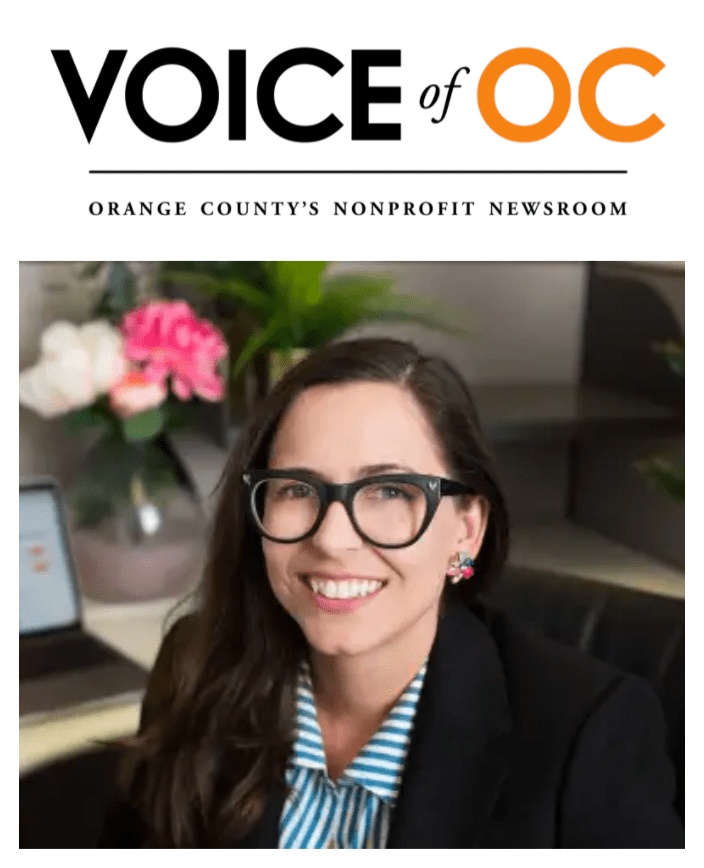

The Newspack Case Study is an ongoing series highlighting the best practices of publishers who use Newspack’s Platform for News—a suite of tools designed to drive editorial excellence and business success.
The Case
The Voice of OC, a nonprofit newsroom in Orange County, California, was founded on June 3, 2009. They published their first content the following year, on March 31, 2010. And since then, they have become a leader in the nonprofit news space. In 2013, contributions from small donors (at $1,000 or less) made up 0.2% of Voice of OC’s revenue. This year, small donors made up 26% of revenue.
The Stats
Percentage of total revenue from small donors: 26%
Number of readers donating to Voice of OC: More than 4,000
Number of recurring monthly donations: More than 800
The Backstory
When Sonya Quick joined Voice of OC, things couldn’t have been much busier. It was two weeks before the 2016 presidential election and three weeks before the first NewsMatch fundraising campaign kicked off. She immediately began managing Voice of OC’s NewsMatch drive, in addition to overseeing the organization’s social media, marketing, and design.
“It was a really exciting time to start,” Quick said. Although she’d never worked in nonprofit fundraising before, she was encouraged by the fact that the 2016 NewsMatch campaign was new for everyone involved.
“We were all sort of like, ‘Hey, we’re just trying this out. Let’s see what we can do,’” she recalled.
The campaign involved a lot of trial and error, she said — writing a fundraising pitch, seeing how it performed, writing another, comparing those results, and so on. In the end, Voice of OC raised right at the match level — $25,000 — which was a significant success compared to the outlet’s past fundraising efforts.
Quick is still wearing plenty of hats and learning along the way. She oversees Voice of OC’s civic engagement, digital fundraising, marketing efforts, and design. And her impact can’t be understated. In addition to her work on the website — she’s re-imagined the Voice of OC logo and visual brand, and launched an award-winning website redesign — Quick has helped the organization achieve major revenue wins.
The Takeaways
How does Quick and the Voice of OC staff do it? The digital editor offered three tips that have contributed to the Voice of OC’s financial success.
- Try different fundraising approaches, and try again.
Quick’s fundraising efforts during her first years at Voice of OC were focused almost solely on big year-end campaigns, like NewsMatch.
“We had to concentrate our fundraising appeals and work at the end of the year so that we could try to reach that big NewsMatch level — so that we wouldn’t leave money on the table from the national front,” she explained.
Over time, though, as Quick and the Voice of OC team started meeting their NewsMatch goal more easily, they were able to expand their fundraising efforts to monthly, then weekly, appeals.
“You get a lot better,” she said. “It’s like sit-ups. You get a lot better when you do something often.”
Now, writing so many fundraising appeals means that Quick is constantly looking for inspiration and different approaches to try.
“Have all of my fundraising pitches been successful? No,” Quick said. “But I’ve tried a lot of different tactics, which benefits the readers, who aren’t just one homogenous group in Orange County.”
Quick explained that their reader base — like any audience — is made up of “different people with different motivations, different interests, and different backgrounds.”
Last year’s most successful campaign was inspired by an online webinar about COVID-19 that Quick attended. One of the experts commented that in lieu of a vaccine, news is the best medicine available.
“Within a half hour, I’d written a donation pitch saying that, and it was easily our best pitch last year,” she said.
It’s a nimble approach Quick tries to take often.
“Being able to routinely ask and try out new ways of fundraising is really helpful,” she said. “You can always measure the results, see if it’s working or not, and try again.”
- Take advantage of your size.
Quick said she enjoys working for Voice of OC’s publisher and editor-in-chief Norberto Santana, Jr. “because he’s completely open to new ideas and new ways of doing things.” Because the Voice of OC’s staff is relatively small — and there aren���t multiple levels of approval required — they are able to experiment with lots of innovative approaches that might otherwise be hard to pull off at larger organizations.
One such example took place earlier this year, when Orange County Supervisor Andrew Do called out the nonprofit news outlet for filing “the brunt” of public records requests. In a public forum, he derisively referred to them as the “Noise of OC.”
Voice of OC decided to wear the moniker as a badge of honor. They reported on the comment and shared it on social media. Two weeks later, they unveiled “Noise of OC” branding and merchandise, like t-shirts and tote bags. The launch coincided with Sunshine Week, a national and nonpartisan effort for journalists and the public to push for greater transparency through open government meetings and accessible public records.

“It was great fun to be able to do that really quickly,” said Quick, who previously worked at the Orange County Register, and understands the benefits of working with a smaller staff.
Quick added that the Newspack platform makes this kind of nimble and efficient work possible.
“It’s really liberating for a small newsroom to use Newspack,” she said. “Things that in other systems would take a tremendous amount of time — and time is money — are much more efficient and fast. If you think of something you’d like to do, you can do it very quickly with the Newspack system.”
- Let your donors speak for themselves.
Like many great ideas, Voice of OC’s donor testimonials were born out of curiosity. “It started with Norberto asking, ‘Well, why are these people choosing to donate?’,” Quick recalled.
Instead of launching a big survey for donors about their motivations, Quick started by asking each new donor — one by one. Whenever a new reader would become a recurring Voice of OC donor, Quick would follow up with an email asking what prompted them to give.
“I started by sending that note only to new recurring donors, and it was so successful that I now send it to every single donor,” Quick explained.
“People give us really thoughtful responses about why they donate to us,” she added. Quick and team have used those testimonials in future fundraising emails and reusable blocks on the website. “It’s so efficient,” she said.

Reader testimonials have become one of their most successful ways to ask for additional donations. “It’s one thing to say something nice about yourself, but when our donors say we’re great, it is much more effective,” Quick explained. She added that, as journalists, it’s much more comfortable to quote readers in their own words.
And there’s one final benefit to the reader testimonials: They offer a real morale boost. Quick likes to read a few testimonials at weekly news meetings. She keeps the donors anonymous — not to affect the relationship for reporters — but the impact is obvious.
“You can see reporters get a big smile on their face when they hear that their work is valued,” Quick said. “It’s great.”





